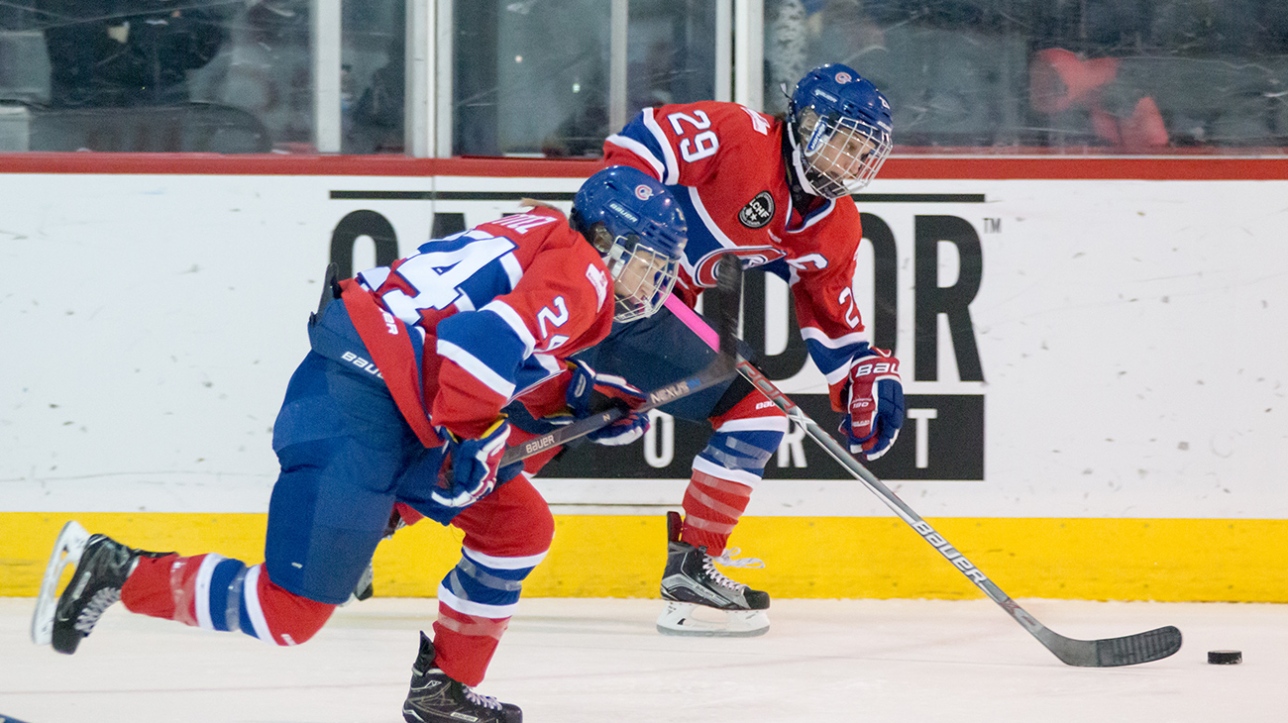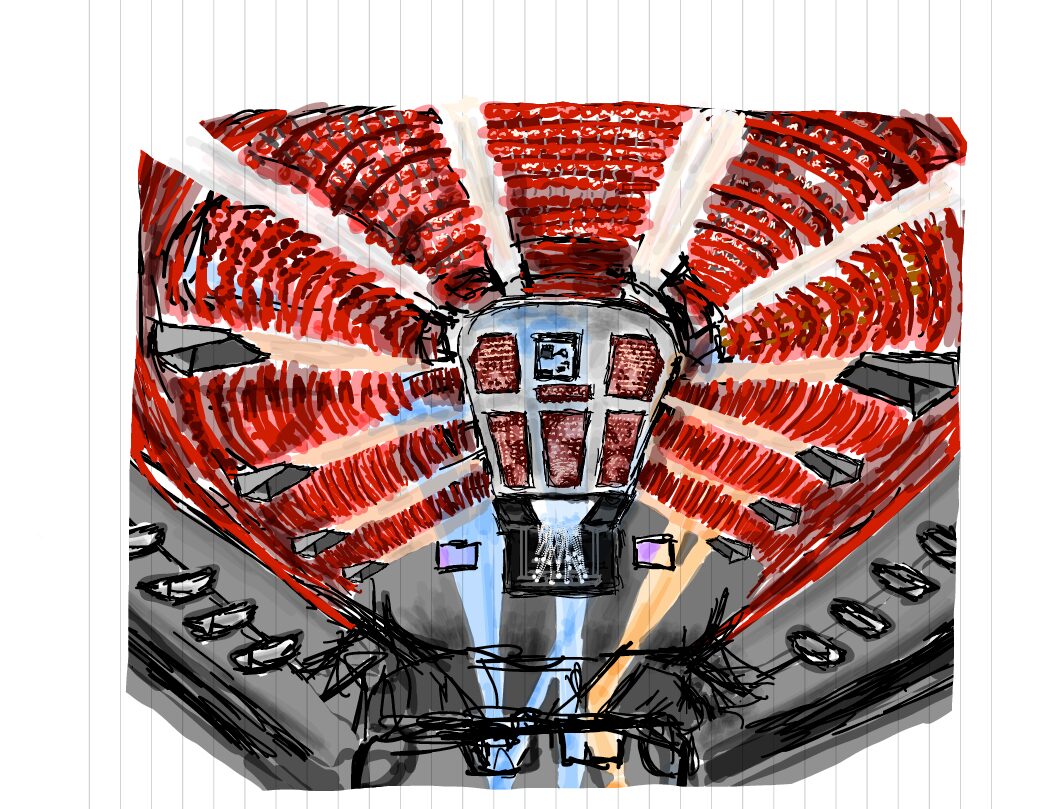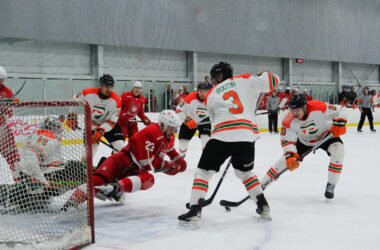On March 24, Les Canadiennes de Montréal, affectionately nicknamed the Fabs, lost 5-2 to the Calgary Inferno in the Clarkson Cup championship game despite McGill alumna Ann-Sophie Bettez’s two goals. With four Cups, more than any other team in Canadian Women’s Hockey League (CWHL) history, the disappointing loss does not threaten Montreal’s place at the forefront of professional women’s hockey. While the CWHL was only founded in 2007, the Canadiennes’ history stretches back over 80 years.
In 1933, the Canadiennes were established as the official francophone women’s hockey team in Montreal. Early on in their history, they formed a rivalry with the Maroons, the local anglophone women’s team. Despite the fact that all players were amateurs, their rivalry was as fierce as the one between their male counterparts, the Canadiens and Maroons of the NHL. Twenty years later, however, the advent of TV broadcasting solidified the public’s conception of hockey as a male sport, and women’s leagues all but disappeared.
Approximately 50 years later, the Canadiennes re-emerged in the National Women’s Hockey League (NWHL). The team was called the Montréal Wingstar until 2003; they then changed their name to the Montréal Axion until the league disbanded in 2007. Several Axion players are still involved in the Canadiennes’ organization: Forward Caroline Ouellette is a member of the coaching staff, while forward Karell Emard is still an active player.
After the NWHL disbanded, the CWHL immediately took its place as the only professional women’s hockey league in North America until a new, U.S.-based NWHL emerged four years ago. Then called the Montréal Stars in the NWHL, the team saw immediate success from the league’s inception.
Through the years, Les Canadiennes, who settled on their current name in 2015, count several Olympians in their history including goaltenders Kim St. Pierre and Charline Labonté as well as current captain Marie-Philip Poulin, Hilary Knight, and former McGill Martlet Mélodie Daoust.
While the Canadiennes’ history is one of overall success, they have faced significant resistance. In the earliest days of women’s hockey, popular opinion asserted that by playing rough sports like football and hockey, women were harming their families. Detractors still claim that women’s hockey is less interesting and shows less skill than men’s hockey. There are fewer opportunities for female players to develop, and they generally have shorter playing careers, as nearly all of them have day jobs to supplement their minimal CWHL salaries.
In bringing attention to this divide, one of the most critical moments in the Canadiennes’ history was the establishment of the partnership with the Montreal Canadiens. Following the Calgary Flames and Toronto Maple Leafs’ lead, the oldest and most storied NHL franchise announced in March 2015 that it would back the Canadiennes. Support came in the form of social media promotion, financial assistance, and the ability to use the Canadiens’ larger venues. They also had the Canadiennes match the men’s team name for better brand recognition.
In promoting the sport, it helps that the Canadiennes act as incredible role models for young girls. Players put in efforts, such as staying after games to sign autographs and hosting learn-to-play events and camps, to inspire the next generation of female hockey players. They show girls that they can aspire to be the next Marie-Philip Poulin, rather than the ”Sidney Crosby of women’s hockey.”








